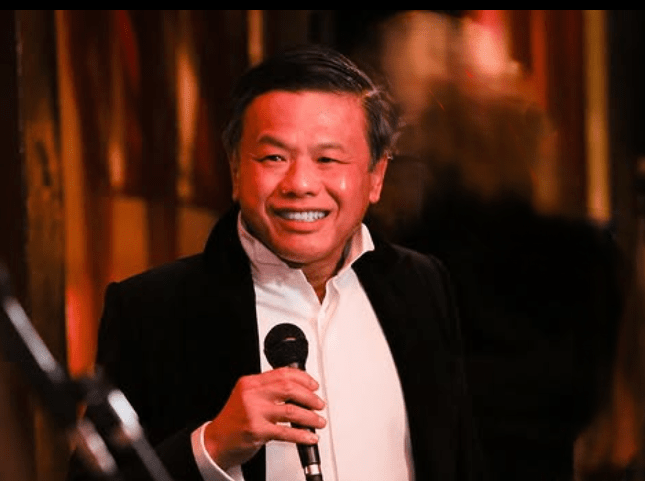Few names in haute couture can compare to Zang Toi when it comes to durability, devotion, and radiant craftsmanship. From a small village in Kelantan, Malaysia, to the most upscale salons in New York, his journey is reminiscent of the American Dream for designers—stitched with tenacity and woven with legacy. His net worth is more than just a figure these days; it is a reflection of decades spent creating clothing that is both daring and exquisitely elegant.

With just $300 and a portfolio of aspirations, Toi arrived in Manhattan and established a niche where classic elegance and cultural diversity coexist. Toi quickly established herself as a reputable name in high society closets and red carpet couture after receiving early recognition from Anna Wintour and taking home the 1990 Mouton Cadet Young Designer of the Year Award. Hollywood royalty and real royalty have been among his remarkably affluent and varied clientele, greatly enhancing his financial portfolio and brand equity.
Zang Toi – Profile & Net Worth Information
| Attribute | Detail |
|---|---|
| Full Name | Zang Toi |
| Birthplace | Kuala Krai, Kelantan, Malaysia |
| Education | Parsons School of Design, NYC |
| Career Start | Founded House of Zang Toi in 1989 |
| Estimated Net Worth | $5 million – $10 million (based on assets, brand value, and real estate) |
| Known For | Couture fashion design, luxury lifestyle, celebrity client base |
| Major Clients | Elizabeth Taylor, Melinda Gates, Eva Longoria, Gong Li, Saudi royalty |
| Flagship Store | 1046 Lexington Ave, Manhattan |
| Notable Contributions | Raised $700K+ for cancer research via Livestrong |
| Reference | Zang Toi Official Website , Instagram |
Financial Fabric: The Relationship Between Style and Long-Term Wealth
Toi’s estimated net worth of $5 million to $10 million comes from a variety of sources, including a consistent retail partnership with Saks Fifth Avenue, yearly exclusive trunk shows in 20 U.S. cities, and high-end bespoke couture commissions. His 800-square-foot, glitzy flagship store on Lexington Avenue serves as both a showroom and a valuable asset that significantly grounds his brand in the cutthroat New York fashion industry.
Toi’s ability to maintain a luxury business without the commercial dilution that comes with mass-market licensing is what makes his clothing unique. He has developed strong, frequently decades-long client relationships and maintained brand prestige with remarkable success thanks to his revenue strategy. Toi’s strategy—a slow fashion movement fashioned through luxury—is especially inventive in a time when fast fashion rules the scene.
Royal Patronage and the Red Carpet Capital
Zang Toi has been dressing cultural institutions as well as fashion icons for over thirty years. From Patti LaBelle and Sharon Stone to Princess Haifa of Saudi Arabia, his gowns have adorned women who command both attention and admiration. These relationships have not only elevated his visibility but significantly boosted his financial trajectory through consistent patronage and powerful word-of-mouth branding.
By leveraging these elite associations, Toi has remarkably grown his couture house without the need for runway gimmicks or reality TV endorsements. His clothes, which are often characterized as being highly tailored and dramatically styled, are expensive, often costing thousands to tens of thousands of dollars each.
Contributing While Gazing Ahead
Profits and media attention aren’t the only indicators of Toi’s success. Over $700,000 has been raised for cancer research, a cause that is dear to his heart, thanks to his charitable contributions, especially to the Lance Armstrong Foundation (now Livestrong). This dedication embodies a larger concept of purpose-led branding, establishing Toi as a caring leader in the highest levels of fashion in addition to being a creative force.
While many boutiques closed during the pandemic, Toi was able to continue operating thanks to his devoted clientele. His company was able to demonstrate how emotional connection, as opposed to aggressive scaling, can be an incredibly durable asset by simplifying operations and making a selective shift to digital showcases.
Cultural Origins and the Influence of Couture
Toi’s love of places like Rajasthan and Udaipur, as well as his Malaysian heritage, are reflected in his vivid use of color and textured textiles. His collections frequently have a global sophistication thanks to these inspirations, which combine Western tailoring and Eastern aesthetics in ways that are both timeless and universally relevant. His love of hot pink, which Diana Vreeland famously referred to as “the navy blue of India,” has come to symbolize his most memorable runway appearances.
Toi’s accomplishment of redefining what it means to be a designer of color in the conventionally Western haute couture industry through this blending of cultures has not only garnered him recognition but also expanded his market appeal internationally.
